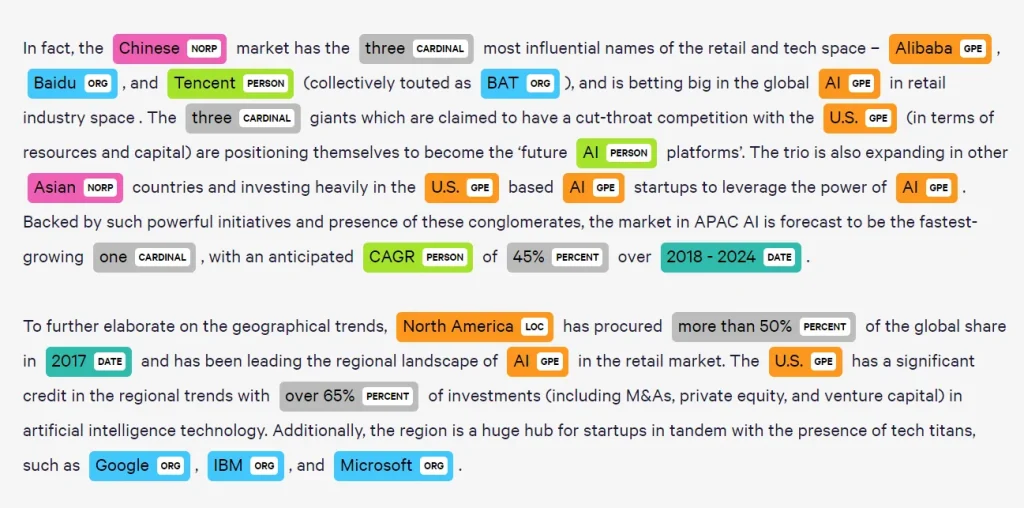Natural language processing (NLP) software leads innovation in the dynamic tech landscape. It deciphers human language complexities and applies understanding to diverse applications.
NLP automates customer support with chatbots 🤖 and extracts insights from extensive textual data, acting as the catalyst to translate human language into actionable data.
The insights to be gained from this article are not merely academic; acquired knowledge can be a catalyst for transformation within your business processes. Familiarize yourself with the latest NLP tools to automate and refine tasks, previously labor-intensive and time-consuming. This leads to a significant enhancement in efficiency and productivity. 🚀
Understanding Natural Language Processing
Natural language processing (NLP) can be seen as the bridge between human communication and computer understanding.
At its core, NLP employs algorithms that allow computers to interpret, deduce meaning, and even generate human language. This is accomplished through various tasks, such as part-of-speech tagging, named entity recognition (NER), sentiment analysis, and more.
For example, a chatbot that can assist customers with their inquiries relies heavily on NLP. Utilizing part-of-speech tagging, it determines whether ‘book’ refers to a noun or verb, contextually understanding customer intent.
Similarly, NER is critical for recognizing product names or locations within a message, allowing businesses to offer personalized responses or content.

Advancements in NLP Models
Recent advances in NLP stem from deep learning models, especially transformers like BERT (Bidirectional Encoder Representations from Transformers) or GPT (Generative Pretrained Transformer).
These models excel at handling context, surpassing their predecessors and demonstrating an exceptional understanding of language nuances.
For instance, Google’s BERT, which you can explore on their research blog, helps improve search engine results by better apprehending user queries.
Transformers are also the backbone of OpenAI’s GPT-3, which you can check out on OpenAI’s official website, renowned for its ability to generate human-like text and used in applications ranging from writing assistance to dialogue systems.

NLP Toolkits and Libraries
Python remains one of the most favored programming languages for NLP due to its extensive range of libraries and tools.
The Natural Language Toolkit (NLTK), an open-source platform, provides tools for over 50 corpora and lexical resources, including text processing libraries for classification 📚, tokenization, stemming, tagging, parsing, and semantic reasoning, which equips developers with the necessary means to handle most NLP tasks.
For those seeking to delve into more cutting-edge NLP libraries, tools like SpaCy offer industrial-strength performance and are highly extensible.
SpaCy’s website, found at Spacy.io, boasts robust models for many languages and has become a go-to for developers who need to perform more complex NLP tasks effectively.
Practical Applications in Industry
Applications of NLP in the industry are abundant and constantly expanding. For instance, marketing teams use sentiment analysis to gauge consumer opinions on social media or product reviews. Tools like Brandwatch, analyze social sentiments to inform brand strategies. 🔍📊
Tech startup product developers use NLP for content automation, enhancing user experiences. Grammarly is an example that aids users in real-time text analysis to improve writing. These tools reshape content creation and consumption by helping writers refine messages for the desired impact.
Overcoming the Challenges with NLP
Despite significant progress, natural language processing encounters challenges, especially in understanding context and managing ambiguities inherent to human languages.
Overcoming these requires ongoing research and developing more sophisticated algorithms capable of discerning subtleties and context.
Tools like IBM Watson’s NLP services offer context-aware text processing, showcasing future possibilities for NLP. On their website, they demonstrate technology extracting complex entities and relationships within unstructured data, suggesting robust capabilities for R&D managers to enhance tech products.

Conclusion
The complexities and idiosyncrasies of human language pose unique challenges in the realm of computing. However, the tools at our disposal today have matured immensely, offering solutions that streamline processes, enhance decision-making, and open avenues for creativity and innovation. 💻🚀
By equipping oneself with the knowledge of top NLP tools and their applications in 2023, tech professionals can push the boundaries of what is possible in automating and enhancing human-computer interactions, fostering a more intuitive and productive relationship between our linguistic capabilities and the machines that aim to replicate them.
As we consolidate our understanding of NLP and its practical tools, we step into a world where language is no longer a barrier but a conduit for connecting businesses with their global audience more effectively than ever.
- Analyzing Patterns in Failed Products - July 25, 2024
- Hybrid Cryptographic Systems - July 24, 2024
- Inadequate Threat Intelligence Integration - July 23, 2024
